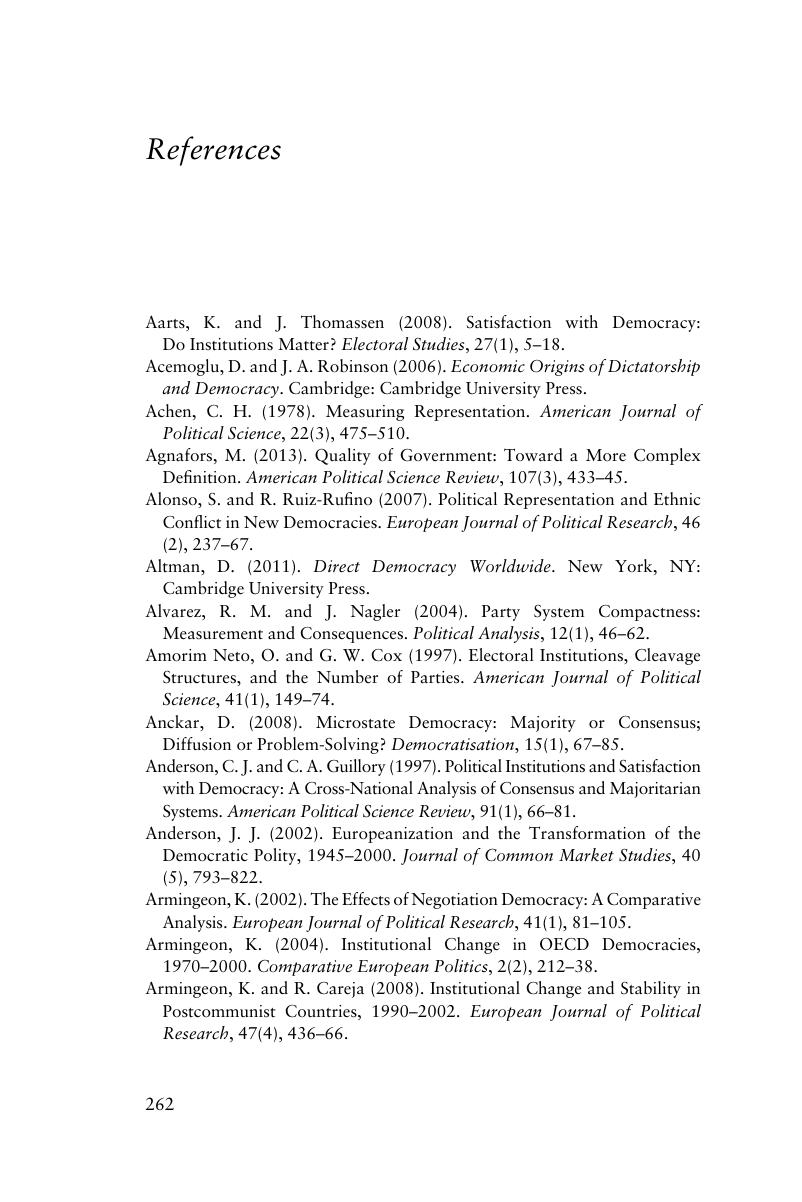Book contents
- Power Diffusion and Democracy
- Power Diffusion and Democracy
- Copyright page
- Dedication
- Contents
- Figures
- Tables
- Preface
- Acknowledgements
- Abbreviations (countries and subnational units)
- 1 Introducing Power Diffusion in Democracies
- 2 A Theory of Power Diffusion, Deliberation and Democracy
- 3 A Taxonomy of Power Diffusion
- 4 Performance
- 5 Legitimacy
- 6 Explaining Power Diffusion
- 7 Convergence
- 8 Subnational Power Diffusion
- 9 Conclusions
- Appendix
- References
- Index
- References
References
Published online by Cambridge University Press: 03 May 2019
- Power Diffusion and Democracy
- Power Diffusion and Democracy
- Copyright page
- Dedication
- Contents
- Figures
- Tables
- Preface
- Acknowledgements
- Abbreviations (countries and subnational units)
- 1 Introducing Power Diffusion in Democracies
- 2 A Theory of Power Diffusion, Deliberation and Democracy
- 3 A Taxonomy of Power Diffusion
- 4 Performance
- 5 Legitimacy
- 6 Explaining Power Diffusion
- 7 Convergence
- 8 Subnational Power Diffusion
- 9 Conclusions
- Appendix
- References
- Index
- References
Summary

- Type
- Chapter
- Information
- Power Diffusion and DemocracyInstitutions, Deliberation and Outcomes, pp. 262 - 281Publisher: Cambridge University PressPrint publication year: 2019



